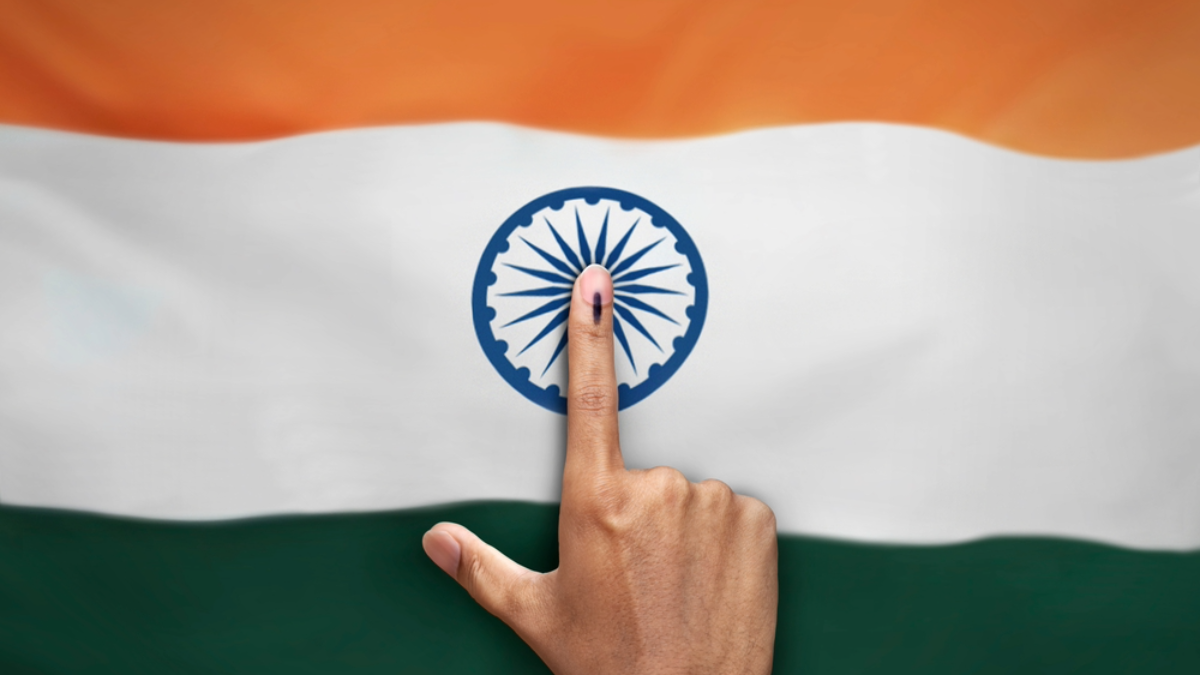Dispatches on Tech and Democracy: India’s 2024 Elections #4
Amber Sinha / May 10, 2024Amber Sinha is a Tech Policy Press fellow.
This is the fourth issue of Dispatches on Tech and Democracy, examining the use of artificial intelligence (AI) and other technologies in the Indian general elections. Three of the six phases of the general elections in India have now concluded, and another one is approaching next week. In this issue, the dispatch looks at the linking of voter rolls with Aadhaar Numbers and the subsequent deletion of rolls, as well as new actions and rules from the Election Commission concerning social media content.
In Focus: Aadhaar and Voter Rolls
In early 2023, the Election Commission of India (ECI) stated, in response to a Right to Information query, that almost 60% of the voters had linked their Aadhaar Numbers to their voter IDs. The linking of Aadhaar Numbers to other forms of identification numbers has been a project of the Unique Identification Authority of India (UIDAI) since the inception of the Aadhaar program. For voter IDs, election authorities have distributed Form 6B to gather Aadhaar numbers from enrolled voters. The government introduced the form following the passage of the Election Laws (Amendment) Act in 2021. Although the ECI has said that linking with Aadhaar is voluntary, the form asks voters to affirm their lack of an Aadhaar Number if they choose not to provide it.
Linking Aadhaar Numbers with voter IDs has been a matter of contention for some years. During the state assembly elections in 2018 in Telangana, it emerged that the government may have disenfranchised over 30 lakhs voters during the process of removing frauds and duplicates from the electoral rolls by reconciling the data against Aadhaar data. In several other states, similar “cleaning up” exercises also occurred. In 2019, Srinivas Kodali, a security researcher, filed a petition in the Hyderabad High Court challenging the constitutionality of these exercises and seeking details about the process.
Related Reading:
- Dispatches on Tech and Democracy: India's 2024 Elections #2
- Dispatches on Tech and Democracy: India’s 2024 Elections #3
While there may be a legitimate need to remove duplicates from electoral rolls, using automated technology without adequate processes for those unjustly impacted by it to challenge and correct errors sets a dangerous precedent. In this case, there is blind reliance on the robustness of an “infallible” technology without accounting for the many ways it could undermine the public's rights to participate in the electoral process.
To accelerate these “cleaning up” efforts, the government allegedly launched a pilot project in Hyderabad that leveraged data from multiple databases, including Aadhaar and EPIC. The process involved seeding or algorithmically using Aadhaar Numbers and related demographic information to search for corresponding entries in other databases such as, in this case, the electoral roll’s database. In his petition to the Hyderabad High Court, Srinivas Kodali said that he suspected that if there were any differences in demographic data between the EPIC database and the Aadhaar database, the program might delete the entries from the EPIC databases.
The matter is now pending before a bench of the Supreme Court. I was able to access the affidavits filed in the court and supporting materials. According to information contained in those documents, the State Election Commission sought the use of a facility called DSDV (Destination-Sequenced Distance-Vector Routing) from the UIDAI. This tool would allow them to carry out the “purification” of electoral databases by comparing them against the Aadhaar demographic data.
This exercise was based on the assumption that the Aadhaar database, due to its robust process of de-duplication using fingerprint authentication, was the most accurate and reliable one. Very early in the days after the inception of the Aadhaar project, the government assumed that this database would serve as the authoritative determinant of identification and, over time, would be used to rid other databases of duplicates. Other databases often have ghosts and duplicates and suffer from poor data collection practices. However, this process of deleting entries from other databases assumes that all entries that do not match the Aadhaar data are false and mala fide. This is clearly not the case.
Often, government databases suffer from poor data collection practices. It is not uncommon for the EPIC database to have misspelled demographic details such as name, address, and father’s name. My own name is spelled incorrectly on my EPIC card. Still, I was permitted to vote in the last two general elections after the voting officer verified my identity against my photograph and other demographic details. To attribute 'mala fide' intent to all mistakes in such databases and summarily deleting them is grossly negligent and damages the hard-earned trust in the electoral process in India.
Aside from automated deletion, the process of deleting voters from the electoral rolls is also prone to errors, and from all accounts, it is very easy to manipulate. In the case of Andhra Pradesh, investigations revealed that Telugu Desam Party party workers would use the SevaMitra app to profile voters and determine how likely they were to support the party. To do this, they would apparently use automated voice calling services to reach out to potential voters and, based on their responses, assign them a score that corresponded to their likelihood of voting for the party.
Once they had compiled a list of those with a low score and consequently, in their estimation, unlikely to vote for the party, they would file a Form 7 objection against them. Form 7 is a feature provided by the Election Commission. Anyone can file this form to object to a name in the electoral rolls. Once filed, the Election Commission is supposed to verify whether the person has moved, is deceased, or is a duplicate, and if that is the case, remove the name. It is unclear how rigorously the Commission followed these steps, as there was no proper door-to-door verification of voters whose names were deleted.
In 2023, G Niranjan, a Congress leader from Telangana, filed a petition before the Supreme Court, requesting directives to the ECI and the government for amendments allowing individuals the choice not to link their Aadhaar and Voter ID. A notification by the India Law Ministry on June 17, 2022, mandated that individuals listed on the electoral roll “may intimate” their Aadhaar number. However, the aforementioned Form 6B offered only two options: either provide the Aadhaar number or declare that one did not have one, thus compelling those unwilling to provide their Aadhaar number to make a false statement.
In September 2023, the ECI assured the court of making necessary clarifications and adjustments. Subsequently, it sought to delete the requirement for provisioning ‘sufficient cause’ for not providing Aadhaar Numbers and requested the Government of India to amend Form 6B. The government has reportedly responded that no such amendments are required and a mere clarification from ECI is sufficient.
Other Developments
Over the last week, the ECI requested the removal of two incendiary videos posted by the ruling BJP party channels on X and Instagram, respectively. Both videos, now taken down, violated rules regarding undue influence and promoting enmity among different groups on the grounds of religion. The videos reflect an overall communal turn in the last two phases of the general elections in India.
Earlier this week, the ECI released special guidelines for responsible and ethical use of social media platforms by political parties and their representatives. Among other things, it directed political parties to remove “fake content” from their social media pages within three hours of such content being noticed. It also specifically references AI, asking parties to refrain from using “technological/AI based tools” that distort information or spread misinformation. The advisory comes after the BJP asked ECI to step in and prevent the circulation of deep fakes.
Last month, X published a post listing takedown orders it had received from ECI regarding posts on its platform. It stated that while it had taken down the posts from its microblogging platform for the duration of the elections in India, it disagreed with the order and believed the post should have remained up. Notably, unlike the blocking orders issued by the Ministry of Electronics and IT in India under Section 69A of the Information Technology Act, which are deemed confidential, no such secrecy obligations apply to the ECI's takedown orders, enabling X to publish them.
Additional Reads
- If you would like to learn more about the risks of linking Aadhaar Numbers with voter IDs in India, see this report by The Brookings Institution.
- Divij Joshi analyses the use of WhatsApp in electioneering in India in detail in this piece for Mozilla Foundation.
- Rest of the World did a deep dive last week into the burgeoning deep-fake industry in Indian elections.
Please share your feedback. Are there stories or important developments that we have missed? You can write to us at contributions@techpolicy.press with your suggestions, reflections, or critiques.
Authors

